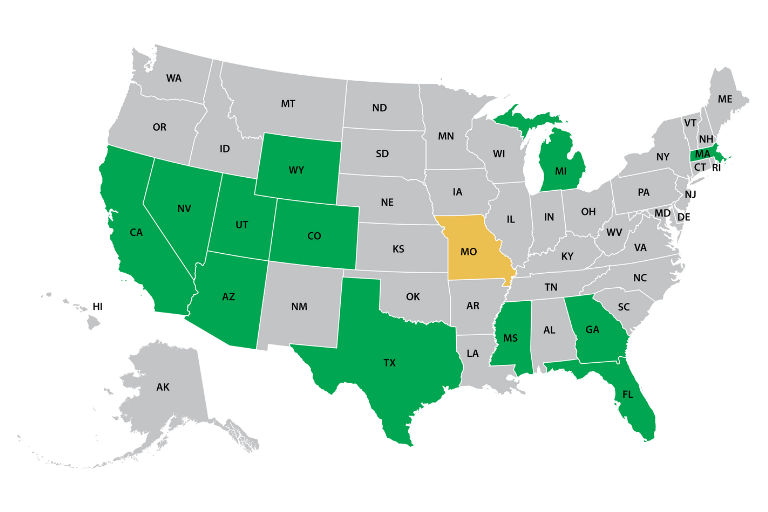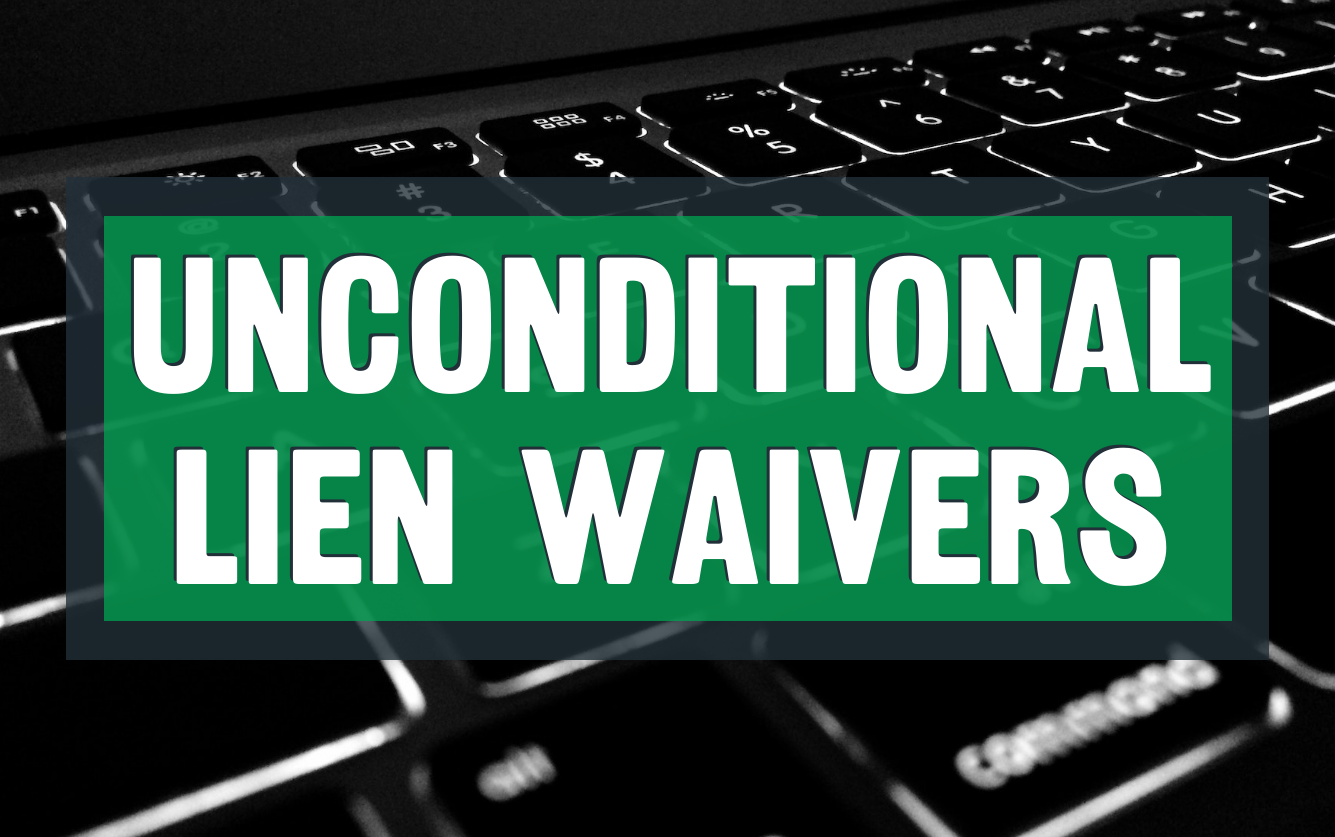States that Require Lien Waivers to be Notarized
Which States Require Lien Waivers to be Notarized? We are often asked “Does this lien waiver have to be notarized?” and the answer is “Yes, in...

Lien waivers are one of the most common documents in construction. They protect project owners and contractors from duplicate payments, while giving subcontractors and suppliers access to funds. But lien waivers are also one of the most misunderstood documents in the industry. Below we answer the top 10 questions about lien waivers and include recent updates that matter for your business.
A lien waiver is a signed document where a party on a construction project gives up (waives) future lien rights in exchange for payment. When used properly, waivers keep money flowing and help everyone feel confident about payment.
A release of lien is a document recorded upon the satisfaction of a mechanic’s lien. The release of lien releases a previously recorded document.
Every lien waiver should clearly identify:
If the lien waiver is for partial payment, you should also include the payment period or a through date.
The “through date” is the cutoff date for labor or materials covered by the waiver. A partial waiver through May 31, for example, only waives lien rights for work performed up to that date. Always double-check the through date to make sure it matches the payment amount.
Electronic lien waivers are enforceable under federal and state e-signature laws, and they are now common in construction. If you use e-signatures, keep a clear audit trail that shows who signed, when, and how the signature was verified. Store signed copies securely for your records.
Yes, in Georgia, Mississippi, and Wyoming, lien waivers should be notarized. Technically, Georgia lien waivers require a witness and seal, which means a corporate seal could be used. In the absence of a corporate seal, notarize them.
Most states do not require a specific lien waiver format. However, there are about a dozen states that do have specific lien waiver requirements, including Arizona, California, Colorado, Florida, Georgia, Massachusetts, Michigan, Mississippi, Missouri (residential projects), Nevada, Texas, Utah, and Wyoming.
 Georgia and Mississippi
Georgia and Mississippi Both Georgia and Mississippi allow for an Affidavit of Non-Payment to be recorded if a waiver has been executed and payment has not been received. Watch the statutory time requirements.
Be aware, both Georgia (2021) and Texas (2022) updated their mechanic’s lien and lien waiver laws – make sure you’re up to date on both.
Yes, lien waivers are either conditional or unconditional as well as partial or final. First, let’s look at the basic definitions of conditional, unconditional, partial, and final:

Now, let’s pair those terms with lien waivers.
|
Type
|
When It Applies
|
Condition
|
Risk Level
|
Best Practice
|
|
Conditional Partial
|
Covers a portion of work or materials through a specific “through date.” |
Only effective once partial payment is received and clears. |
Low |
Safest for ongoing progress payments. Always confirm the through date matches the payment amount. |
|
Unconditional Partial
|
Covers a portion of work or materials through a specific “through date.” |
Effective immediately upon signing, regardless of whether payment clears. |
Medium to High |
Avoid unless funds are already verified in your account. |
|
Conditional Final
|
Waives all lien rights at the end of a project. |
Only effective once final payment is received and clears. |
Low |
Preferred for final payment, but confirm funds clear before releasing. |
|
Unconditional Final
|
Waives all lien rights at the end of a project. |
Effective immediately upon signing, regardless of payment status. |
Highest |
Never sign until you have confirmed full and final payment has cleared. |
Excerpt from a Conditional Lien Waiver
Upon receipt by the undersigned of a check in the above-referenced Payment Amount payable to the undersigned, and when the check has been properly endorsed and has been paid by the bank on which it is drawn, without any bankruptcy filing by <<Name of Debtor>> within ninety days thereafter...
Which, in more succinct terms “This waiver becomes effective only once payment is received and cleared.”
Yes, an unconditional lien waiver may be masquerading as a conditional lien waiver. It’s critical to review the entire document (don’t rely on the document title).
We frequently see two phrases within the “consideration clause” of the waiver, which indicate the waiver is unconditional and not conditional:
“the receipt whereof hereby acknowledged” and
“the receipt and sufficiency of which are hereby acknowledged”
These two phrases are legalese for “I have received the payment and the payment cleared.”
Conditional lien waivers are preferred over unconditional lien waivers, because the “conditions” provide the creditor with leverage, in the event payment is not received or does not clear.
We recommend you don’t sign a lien waiver before receiving and confirming payment. If the other party requires a signed waiver before releasing payment, consider using a trusted third-party intermediary, such as NCS Credit or an attorney. The intermediary can hold both the signed waiver and the payment, then release the waiver to the paying party once the payment has cleared and funds are confirmed.
If you signed an unconditional waiver, you may have lost lien rights even if the check did not clear. With conditional waivers, your rights remain until funds actually clear the bank. Be precise about whether “payment” means receipt of a check, deposit, or cleared funds.
Yes. In most cases, signing an unconditional waiver means lien rights are lost even if payment fails. However, depending on the circumstances in which the waiver was given there could be new causes of action in addition to receipt of bad check.
Often, yes. Many waivers include broad language that releases all claims, including lost profits or disputed change orders (key phrase is “all possible causes of action”). That said, it will depend on the specific language within the waiver you signed. You should have an attorney review the waiver and confirm.
Note: If the waiver provides for carve outs, it is recommended you enter the amounts remaining due in this section.
Yes, if a party is requiring an executed waiver in exchange for payment, the payment can be withheld until the signed waiver is received. You may be reluctant to sign a waiver without cleared payment, and you should be.
In situations such as this, many of our clients will hire an attorney to facilitate the exchange of waiver for payment. When you hire an attorney to facilitate the exchange, the attorney will hold both the funds and the signed document.
Essentially, the funds are held in escrow until payment has cleared. Once the payment has cleared, the attorney remits funds to you and provides the signed waiver to the other party. If funds don’t clear, or payment isn’t made, the attorney will not release the signed waiver to the other party.
Here are some best practices:
Before you sign a waiver, you should confirm the dollar amounts match (what you are waiving & the amount received), double check to ensure the document is properly dated and signed, carefully review the waiver language so you don’t inadvertently waive too much, and honestly, there is a lot at risk when executing lien waivers: seek a legal opinion.
Lien waivers keep construction projects moving, but they also carry risk if misunderstood. Review every waiver carefully, confirm state requirements, and protect your rights by using conditional waivers and clear carve-outs.
NCS Credit can simplify the process, help you comply with state law, and protect your lien rights. Contact us today to protect your mechanic’s lien and bond claim rights.

Which States Require Lien Waivers to be Notarized? We are often asked “Does this lien waiver have to be notarized?” and the answer is “Yes, in...

What Information Should You Include In Lien Waivers? Lien waivers; we can’t get enough of ‘em! A lien waiver is a signed document in which the lien...

Lien Waiver Language Part 2: Unconditional Lien Waivers Every lien waiver should clearly identify the property name & project location, the debtor’s...